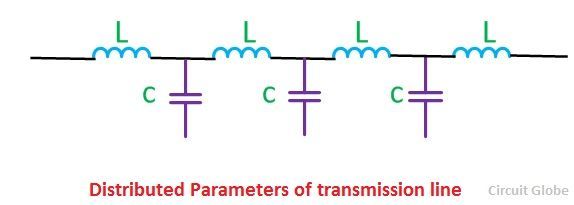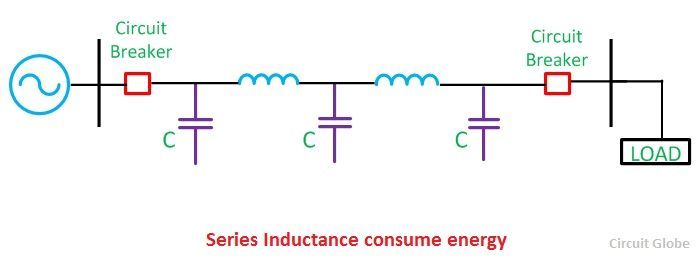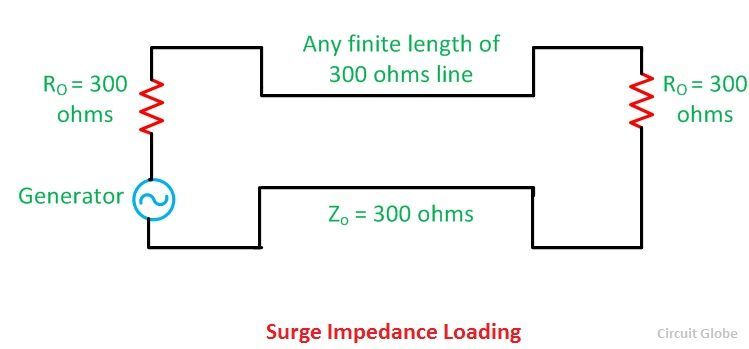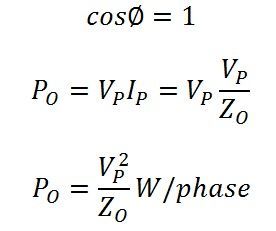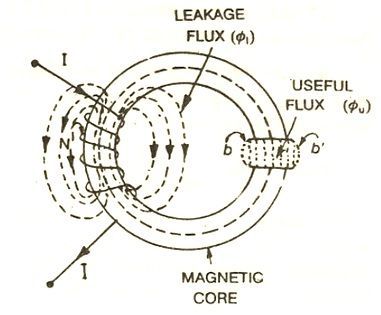ELECTRICAL LOAD ASSESSMENT
Ø
Connected Load :- The sum of continues rating of
all electrical equipment connected to
the supply system is known as connected load.
Ø
Maximum Demand :- Maximum demand is the Maximum load
which a consumer uses at any time which consume for min 30 mints). It is the maximum demand which
determines the size and cost of the installation.
Ø Demand Factors:- The ratio of maximum demand to the connected load is called the demand factor. It is always less than unity.
Ø
Load Factor:- The ratio of the average load
to maximum load during 24 hours is called as load factor.
The
load factor can also be defined as the
ratio of energy consume during a period to the energy which would have been
used if the maximum demand had been maintain throughout that period.
Ø
Diversity Factor: - The ratio of the sum of individual maximum demands to the
simultaneous maximum demand on the power station is known as diversity
factor. It is always greater than unity.
Ø Utilization Factor :- It is the measure of utility of power plant capacity and is the
ratio of maximum demand to the rated capacity of power plant
Ø Power Factor:- The POWER FACTOR is a number
(represented as a decimal or a percentage) that represents the portion of the
apparent power dissipated in a circuit.
I.
Diversity Factor is higher, the energy is cheaper
II.
Load Factor, Diversity factor higher the energy per unit cost is
less.
III.
Diversity Factor has direct effect on the fixed cost of unit
generated.
Different Types of Load:-
The different types of loads are as follows
1.
Residential or domestics load
2.
Commercial load
3.
Industrial load
4.
Government load
5.
Municipal load
6.
Irrigation load
1.
Residential or domestics load:- Domestics load mainly consists of lights,fans, domestics
appliances such as heaters,refrigerators,air-conditioners for rooms, radio receivers,television,LCD,LED,electric
cookers, electric water-heater, single phase I.M. for pumping.
The diversity factor of such load is between 1.2 to 1.3. The
load factor of such load is very poor and it is between 10% - 20% .
2.
Commercial load:- This
type of load mainly consist of lighting for shops, advertisement ,fans and
electrical appliances use for commercial purpose likes shops ,restaurants,
market places etc.
The demand factor for such load is 100% & the diversity
factor is between 1.1-1.2 .The load factor of such load is between 25%- 30%.
3.
Industrial load:- This type of load can be subdivided into sections depending on
the power range required
I.
Cottage industries
which requires about 5kw
II.
Small scale industries
about 25 kw
III.
Medium scale industries
which requires about 25-100 kw
IV.
Large scale industries
which requires about 100-500 kw
V.
Heavy scale industries
which requires more than 500 kw
For large scale industries the demand factor may be taken as
70-80% and the load factor between 60-65%.
For heavy industries the demand factor is 85- 90% and the load
factor is about 70-80%
4.
Government load:- This
may be classified as separate type of load when it has separate feeders &
special working condition for example Defense load.
5.
Municipal Load:- Street
light is one of the municipal load. This type of load is practically constant
throughout the hours of darkness so the demand factor is 100%, the diversity
factor can be taken as 1 when considered for the duration of street lighting
load and load factor is 25-30%.
6.
Irrigation load:- This
type of load is required for supplying water for fields for crops in different
seasons . The demand factor 90-100%,Diversity Factor 1-1.5 and load factor
20-25% for irrigation load.
TARIFF:-
The
electrical energy produced at the generating station is delivered to a large
number of consumers. The rate at which energy is sold to the consumers (called
tariff) is fixed by the supplying company .While fixing the tariff, the supply
companies are to ensure that they should not only recover the total cost of
producing the energy but also earn some profit. However, the profit should be
minimum possible so that electrical energy can be sold at reasonable rates and
the consumers insured to use more electricity.
The
rate of electrical energy at which it is sold to the consumers is called tariff
.The supply companies invest money to generate, transmit and distribution of
electrical energy,a tariff is fixed. The cost of generation depends upon the
magnitude of energy consumed by the consumers and his load conditions.
Therefore, due consideration is given to different types of consumers (e.g.
domestic, commercial and industrial) while fixing a tariff
The main objective of
the tariff is to ensure the recovery of the total cost of generation and
distribution .Tariff should include the following items:
(1) Recovery of cost of
electrical energy generated at the generating system.
(2) Recovery of cost on
the capital investment in transmission and distribution system.
(3) Recovery of cost of
operation, supplies and maintenance of equipment.
(4) Recovery of cost of
metering equipment, billing and miscellaneous services .
(5) A marginal return
(Profit) on the capital investment
TYPES OF TARIFF
There are various types
of consumers ( domestic, commercial and industrial etc.) and their energy
requirements are also different. Accordingly, several types of tariffs have
been designed so far, out of which the most commonly applied are described
below:
1.
SIMPLE TARIFF
2.
FLAT RATE TARRIF
3.
BLOCK RATE TARIFF
4.
TWO-PART TARIFF
5.
MAXIMUM DEMAND TARIFF
6.
POWER FACTOR TARIFF
1.Simple
Tariff: The tariff in which the rate per unit of energy is
fixed, is called simple tariff.
This
is a simplest possible tariff. The rate per unit of energy consumed by the
consumer is fixed irrespective to the quantity of energy consumed by a
consumer. This energy consumed is measured by installing an energy meter
The
following are the advantages :
1.
It is in simplest form and easily understood by the consumers.
2. Consumer
is to pay as per his consumption.
Disadvantages
1.
Consumer is to pay the same rate per
unit of energy consumed irrespective of the number of units consumed by him.
Hence, consumers are not encourage to consume more energy.
2.
The cost of energy per unit delivered is
high.
3.
The supplier does not get any return for
the connection given to the consumer if consumer does not consume any energy in
a particular month.
Application :
Since it is very simple form of tariff,
it is generally applied to tube wells which are operated for irrigation
purposes
2.
Flat rate tariff.
The tariff in which different types of consumers are charged at
different per unit rates is called flat rate tariff. This type of tariff
is similar to simple tariff. Only difference is that consumers are grouped into
different classes and each class of consumer is charged at a different per unit
rate. For example flat rate for fan and light loads is slightly higher than
that for power loads.
Advantages
(1)
It is fairer to different types of consumers.
(
2) It is quite simple in calculations.
Disadvantages
(1)
Consumers are not encouraged to consume more energy because same rate per unit
of energy consumed is charged irrespective of the quantity of energy consumed.
(2)
Separate meters are required to measured energy consumed for light loads and
power loads.
(3)
The suppliers does not get any return for the connection given to the consumer
if he does not consume any energy in a particular period or month.
Application :Generally
applied to domestic consumers. Since it is simple and easy for explanation to consumers, therefore this tariff is
3. block rate tariff:
The
tariff in which first block of energy is charged at a given rate and the
succeeding blocks of energy are charged at progressively reduced rates is
called block rate tariff
In
this type of tariff, the energy units are divided into numbers of blocks and
the rate per unit of energy is fixed for each block. The rate per unit of
energy for the first block is the
highest and reduces progressively with the succeeding blocks. For
example, the first 100 units may be charged at the rate of Rs. 3.00 per unit;
the next 100 units may be charged at the
rate of Rs.2.50 per unit and the remaining additional units may charged at the
rate of Rs. 2.00 per unit.
Advantages:
(1) By
giving an incentive, the consumers are encouraged to consume more energy. This
increases the load factor of the power system and hence reduces per unit cost
of generation.
(2) Only one energy meter is required to measure
the energy .
Disadvantages:
(1) The
supplier does not get any return for the connection given to the consumer if
consumer does not consume any energy in a particular period.
Application
This
type of tariff is mostly applied to domestic and small commercial consumers.
4. Two – Part
Tariff
The
tariff in which electrical energy is charged
on the basis of maximum demand of the consumer and the units consumed by
him is called two- part tariff.
In
this tariff, the total charges to be made from the consumer are split into two
components namely fixed charges and running charges. The fixed charges are
independent of energy consumed by the consumer but depend upon the maximum
demand, whereas the running charges depend upon the energy consumed by the
consumer. The maximum demand of the consumer is assessed on the basis of the kW
capacity of all the electrical devices owned by a particular consumer or on the
connected load
Thus,
the consumer is charged at a certain amount per kW of energy is consumed i.e.
Total charges= Rs. (a X kW + b X kWh )
where,
Rs. a= charges per kW of maximum demand
Rs. b= charges per kWh of energy
consumed
In
this tariff basically, the charges made on maximum demand recovers the fixed
charges of generation such as interest and depreciation on the capital cost of
building and equipment, taxes and a part of operating cost which is independent
of energy generated. Whereas, the charges made on energy consumed, recovers
operating cost which varies with variation in generated (or supplied) energy.
Advantages
(1) It
is easily understood by the consumers.
(2) The
supplier gets the return in the form of fixed charges for the connection given
to the consumer even if he does not consume any energy in a particular period.
Disadvantages
(1) If
a consumer does not consume any energy in a month even then he has to pay the
fixed charges .
(2) Since
the maximum demand of consumer is not measured, therefore, there is always
conflict between consumer and the supplier to assess the maximum demand.
Q.1 A power supply is having following loads:
|
Types of load |
Maximum demand(kW) |
Diversity of Group |
Demand Factor |
|
Domestic |
1500 |
1.2 |
0.8 |
|
Commercial |
2000 |
1.1 |
0.9 |
|
Industrial |
10000 |
1.25 |
1 |
If the overall system diversity
factor is 1.35, Determine The maximum demand and
Load Forecasting:- There are mainly four method of load forecasting
I.
Section method or load
survey method
II.
Method of extrapolation
III.
Mathematical method
IV. Mathematical method using economics parameters
I. Section method or load survey method: In this method the area under consideration is visited and the existing and future load requirement are forecast, Here the consumer group are classified into residential or domestics consumer, commercial consumers, industrial consumers etc. are made for each consumer categories and their respective work time also noted. This method may cover a periods 8-10 years for planning of equipment and erection.
II.
Method
of extrapolation: This method involves study of data collected from various
records and used in the comparison of trend of increase in demand and energy
consumption during past period comparable with period of forecast.
III. Mathematical method: The curve are plotted with the data of energy consumption for past years and trends is observed by the direct extrapolation of rate of change of energy requirement.
IV. Mathematical method using economics parameters: This method using economics parameters are based on the assumption that per capita consumption of electrical energy in a country depends upon economics factor like cost, efficiency ,production ,consumption ,transport etc. Indices for these parameters are found and suitably used for extrapolation of linear or exponential approximations.
Regression analysis:
It is the study of the behaviour of a time series or a process (e.g. power system load) in the past and its mathematical modeling so that the future behaviour can be extrapolated from it, in time, in time varying events such a power system load can be broken down into the following major component.
- Basic trend :
- Seasonal variation
- Cyclic variation :It includes periods larger than seasonal variation and cause the load pattern to depleted load from two or three years.
- Random variation: It occurs on account of day to day changes and depends upon type of week, weekend.
Regression analysis depends upon the following basic
trends (i) linear trend (ii) exponential trend
(i)
Linear trend: A past trend where the increase in
consumption from year to year is more or less constant. Tabulate the past consumption data and plot it on an
graph which give a straight line.The projection of this line will give a forecast of future demands. But
in real life, such growth trend is unlikely in the power supply industries. The
such growth trend in the power industries can be mathematically expressed as
follows
Ct = a + b t
Where Ct is electrical consumption at any year t
a is consumption for
base year t= 0
b is constant annual
increase in energy consumption
t = T-1+ n
Where T is the no. of
year for which the statistical trend is studied
n is the no. of year
for which the forecast is desired.
Q) Find the electrical consumption in 15 years it consumption of base year is 2,annual increase in consumption is 0.18 mv/year number of year for which the forecast is required is 5 and number of years for which the statistical trend is studied is 11 years.
(ii) Exponential trend: In this case past data are drawn on a logarithmetic graph to give straight line projection for forecasting. Its mathematical expression is
Ct = C0 (1+ m )t
Where m
is mean annual growth of
consumption during T years
&
C0 is consumption in reference
year .
By applying log at both
side of the equation we get
log Ct =
log C0 + t log(1+ m)
= a
+ bt
Where a = log C0 & b = log(1+ m)
Q) Find the consumption at the end of 25
years for which the statistical trend is studied is 21 years, consumption in
reference year is C0 = 5000 mV mean annual growth is 10 % and n = 5 years.
